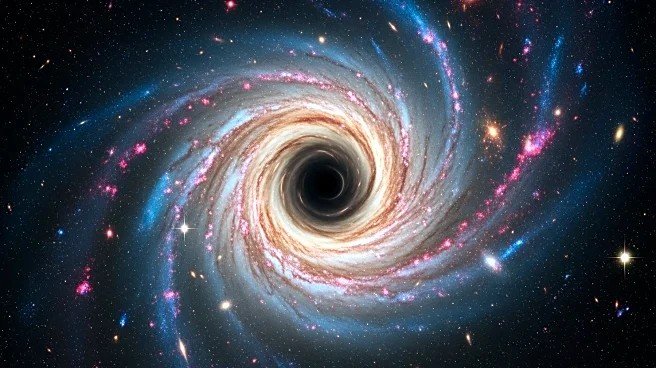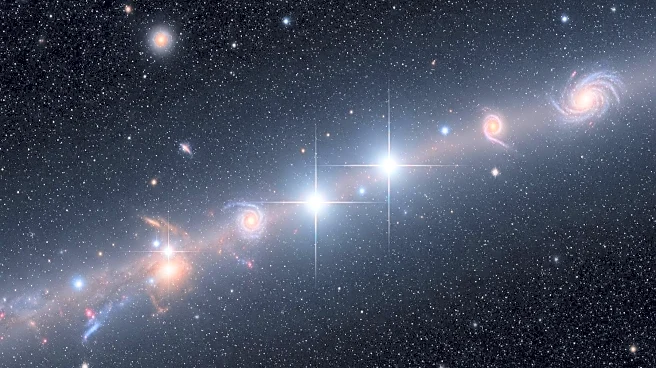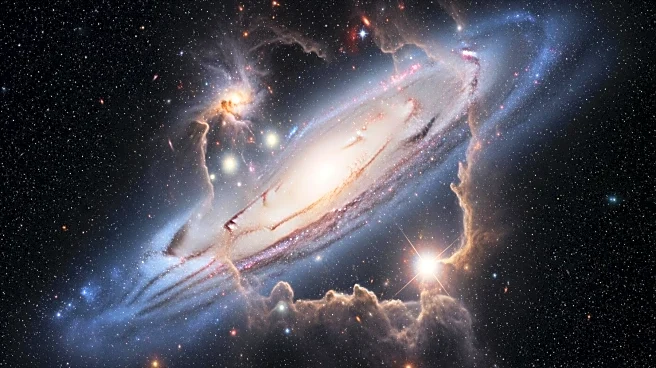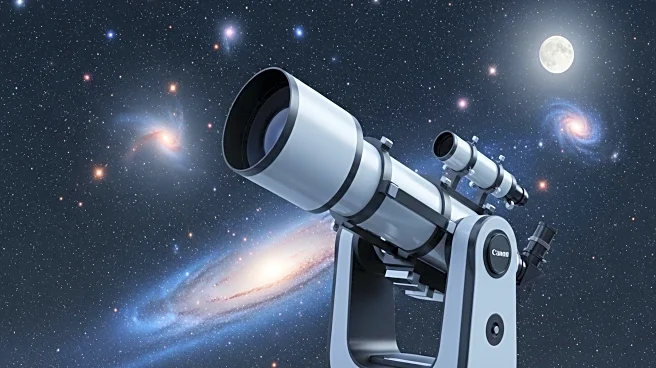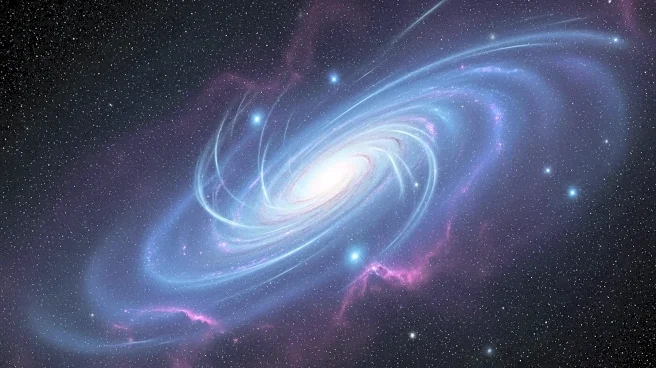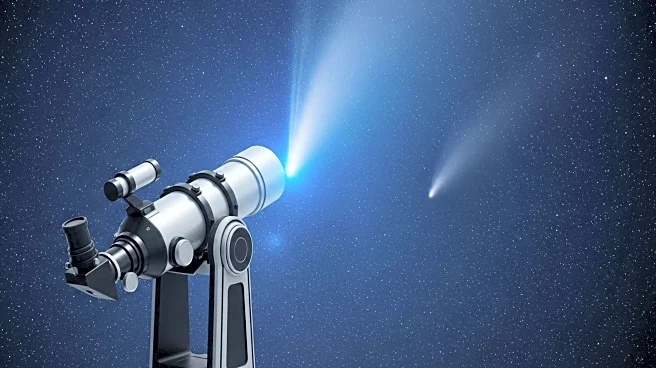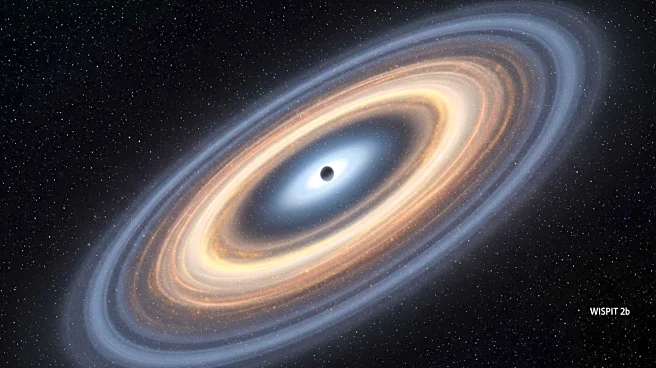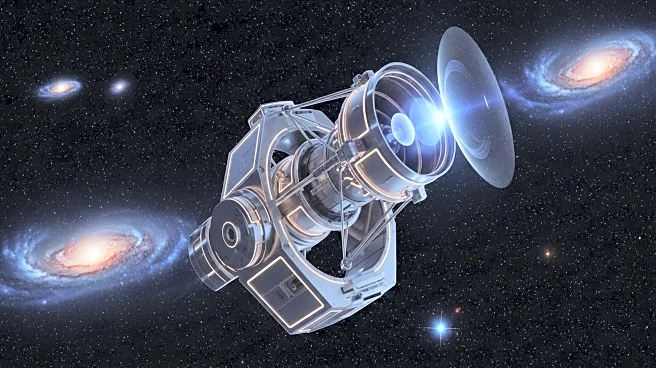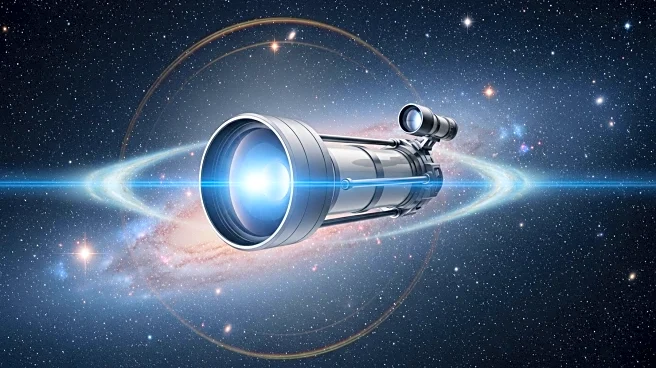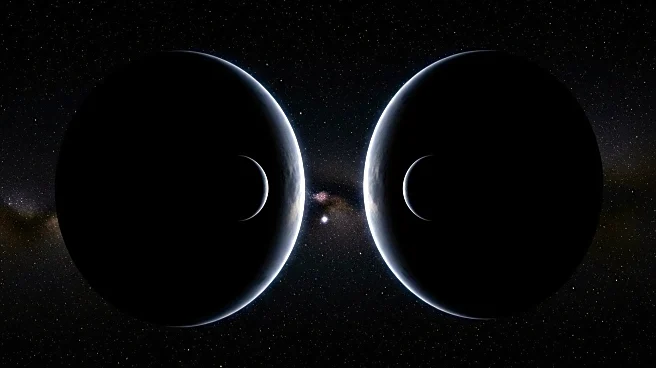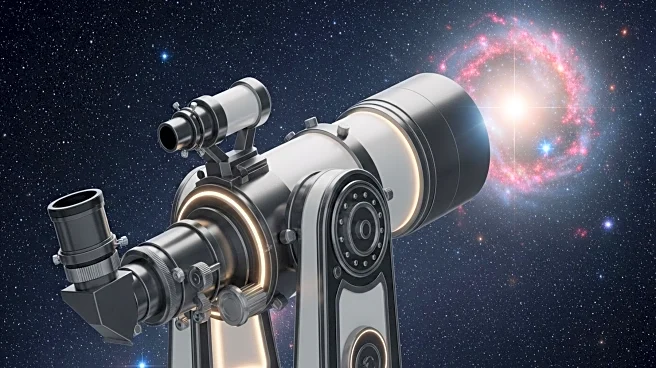What's Happening?
A team of scientists has made a significant breakthrough in understanding the Milky Way's supermassive black hole, Sagittarius A*. For decades, astronomers have searched for evidence of winds emanating from this black hole, which is believed to emit powerful winds of hot gas from its event horizon. The recent study, published on the preprint server arXiv, provides the strongest evidence yet of these winds. Researchers used the Atacama Large Millimeter/Submillimeter Array (ALMA) in Chile to map cold molecular gas around Sagittarius A*, revealing a cone-shaped gap that aligns with X-ray data from NASA's Chandra X-ray Observatory. This alignment suggests that hot plasma wind from the black hole is blowing away cold gas, emitting X-rays in the process. The findings are a major step forward in solving the mystery of the black hole's winds, although direct evidence, such as measuring particle outflow velocity, remains elusive.
Why It's Important?
The discovery of winds from Sagittarius A* is crucial for understanding the dynamics at the center of the Milky Way and its evolution. Supermassive black hole winds play a significant role in shaping their host galaxies by keeping intergalactic gas hot and suppressing star formation, thus limiting galaxy growth. Understanding these processes is key to tracing the Milky Way's evolution and, by extension, our own origin story. The findings could have broad implications for astrophysics, offering insights into how galaxies evolve and the role of black holes in this process. The study also highlights the capabilities of advanced telescopes like ALMA in penetrating dense cosmic dust and providing detailed observations.
What's Next?
While the study provides indirect evidence of the black hole's winds, direct measurements of particle outflow velocity are still needed to conclusively solve the mystery. Scientists are likely to continue using advanced telescopes and data processing techniques to gather more evidence. The ongoing research could lead to a deeper understanding of the Milky Way's center and potentially influence future studies on galaxy formation and evolution. As astronomers push to understand the heart of our galaxy, further discoveries could reshape current theories about black holes and their impact on cosmic structures.
Beyond the Headlines
The discovery raises questions about the ethical and philosophical implications of understanding cosmic phenomena. As scientists uncover more about the universe's mysteries, it challenges our perception of existence and our place in the cosmos. The study also underscores the importance of international collaboration in scientific research, as facilities like ALMA involve contributions from multiple countries. This collaboration is essential for advancing knowledge and addressing complex scientific questions.
